As October rolls into Arizona, it brings with it a unique window for garden enthusiasts. The milder climate of this month offers a golden opportunity for planting a variety of greens, from vegetables to blooming flowers and sturdy shrubs.
Whether you’re a seasoned gardener or just dipping your toes in the soil, this article will outline the top things to plant in October, ensuring a thriving garden showcasing the best of Arizona’s growing potential.
1. Lettuce
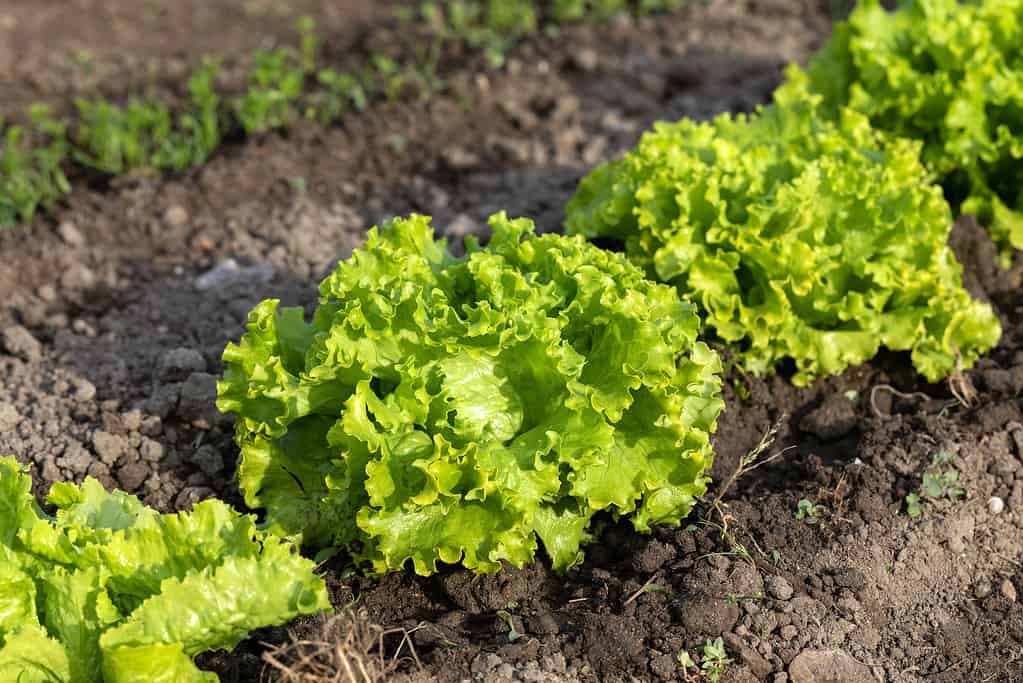
Plant lettuce in October in Arizona.
©Thomas Pajot/iStock via Getty Images
October in Arizona is a great time for planting lettuce. This leafy vegetable thrives above ground and is a favorite among many American gardens. Consuming locally-sourced veggies, like lettuce, promotes better health.
Lettuce can have either sleek or crinkled leaves, which might be green or red. The plant typically reaches a height of 12 to 40 inches and is usually harvested within its first season.
Planting lettuce is best done directly outdoors during the last weeks of October when the weather starts to cool. Scatter the seeds lightly on the soil, spacing them about an inch apart. Ensure you don’t cover them too much; they require light to sprout.
Choose a sunny spot with good drainage for your lettuce. Because it has a shallow root system, inspect the soil’s top layer twice a week and water it if it’s dry. A 3-inch mulch layer can also be beneficial in retaining moisture.
2. Radish

As the weather cools, you can plant radishes in Arizona.
©Andrii Zastrozhnov/Shutterstock.com
For those considering October gardening in Arizona, radishes are a top pick. These crops, which can be annual or biennial, are known for their diverse root shapes, from round to elongated. While their outer skin comes in many colors, including white, pink, red, and even black, the inside typically remains white.
These zesty veggies quickly yield roots, usually between one to three inches in size, offering a burst of peppery flavor.
To plant, dig small holes about a half-inch deep. If your seeds have been sitting around for a while, drop two to three in each hole. After placing the seeds, cover them gently with soil. The good news? You can plant radishes all through October in Arizona!
Find a location that receives a minimum of six hours of sunlight daily. Radishes thrive in sunlight, and without adequate light, they tend to focus more on leaf growth. To ensure optimal root development, loosen the soil to prevent compaction and clear out any stones.
3. Potato

You can grow potatoes in Arizona from September to January, including October.
©Pi-Lens/Shutterstock.com
Arizona’s low desert offers the ideal conditions for planting potatoes, especially from September to January, with October being the perfect time.
Often hailed as the most beloved and adaptable veggie in America, potatoes are starchy delights. These vegetables are essentially tubers that sprout on potato plant roots, and their size can vary based on their type.
Interestingly, potatoes are typically grown not from seeds but from segments of their roots, known as seed potatoes.
Place these seed potato segments into the ground and layer them with soil. As shoots emerge, you can periodically add more soil to your container, doing so every couple of weeks until it’s nearly full. After this, maintain moisture and let them flourish.
For best results, position your potato plants in a location that gets 6-8 hours of sunlight daily, ensuring the soil is acidic and offers good drainage.
4. Parsley

Plant parsley in Arizona from October to April.
©Iurii Garmash/iStock / Getty Images Plus via Getty Images
In Arizona, October kicks off the time to plant parsley, and this window extends until April.
Parsley is an aromatic herb valued for its leaves, which not only pack a flavorful punch but also boast ample amounts of vitamin C, vitamin A, and iron. You’ll know it’s time to gather your parsley when it stands roughly six inches tall.
To plant, scatter the seeds lightly in shallow trenches, gently covering them with soil. Make sure to space out these trenches by about half a foot. A heads-up: parsley seeds might take their sweet time, sprouting in as long as six weeks.
For a flourishing parsley plant, select a sunny spot where it can bask in direct sunlight for most of the day. It thrives in nutrient-rich soil that drains well. To enhance soil health, consider integrating compost or other organic materials.
For an added boost, circle your parsley with organic mulch; this not only retains moisture but also keeps pesky weeds at bay and maintains a steady soil temperature.
5. Oregano
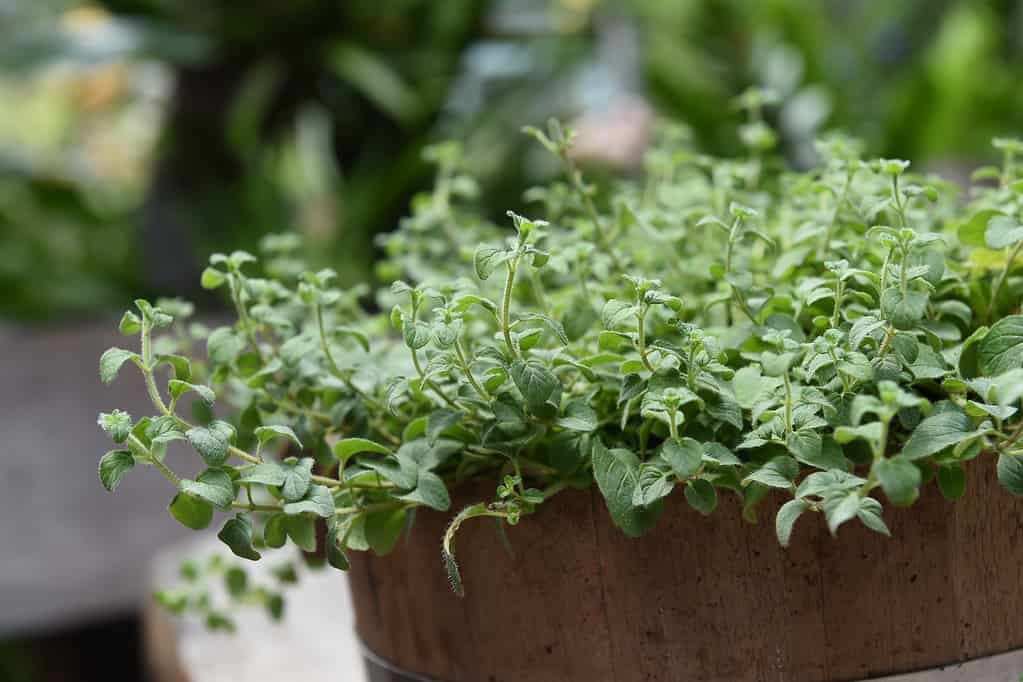
Oregano is another herb you can grow in Arizona in October.
©nimon_t/iStock / Getty Images Plus via Getty Images
In Arizona, the ideal months to plant oregano, be it from seeds or young plants, span from February to April and again from October to November.
Oregano is another culinary herb popular for seasoning dishes. While it’s frequently used in cooking, it’s not particularly known for its health benefits. This herb showcases olive-green foliage and is adorned with purple flowers. It shares familial ties with herbs like mint, basil, and thyme.
With a structure that’s woody and perennial, oregano plants can reach a height of 1 to 3 feet tall and have leaves that range from half an inch to an inch and a half in length.
Start planting outdoors when the daytime temperature consistently reaches 70°F. Simply place the seeds on the soil’s surface and give them a gentle pat. Plant your seeds in rows spaced about 20 inches apart, and once the seedlings appear, ensure they are spaced roughly 8 inches apart.
Originating from the Mediterranean, oregano thrives in locations with ample sunlight and excellent drainage. It’s happiest in well-draining soil, especially when planted in breathable containers like terracotta pots.
6. Mint
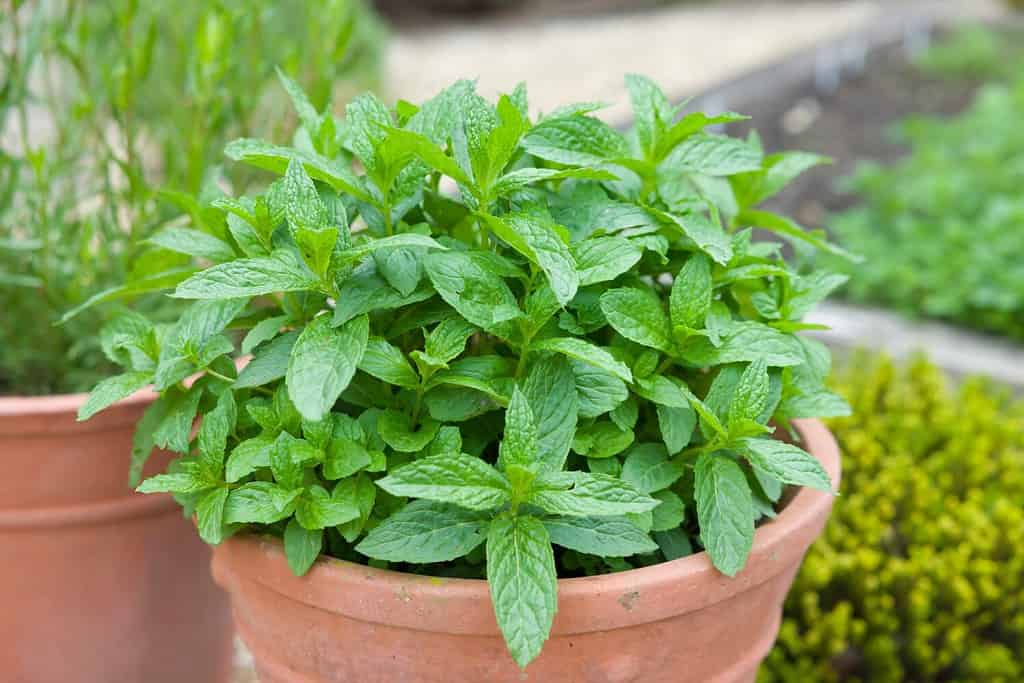
In Arizona, mint can be planted between February and April and again from October to November.
©Paul Maguire/Shutterstock.com
If you’re in Arizona and didn’t get a chance to plant mint between February and April, you’re in luck! You get another shot from October through November.
Mints stand out for their distinct aroma. These plants develop expansive underground and above-ground shoots with upright, squared, and multi-branched stems. On average, mint plants can reach between 10 and 48 inches tall. Given their vigorous growth pattern, some mint varieties can be aggressive and overtake other plants.
For planting, set the seeds about a quarter-inch into the soil and then lightly cover them. Maintain moist conditions with temperatures hovering around 70°F. Expect sprouts to emerge within a week or two.
For optimal growth, ensure that mint enjoys a spot with damp yet well-drained soil with full sun to partial shade. Consider using a pot for cultivation, as this not only keeps its growth in check but also prevents it from overshadowing neighboring plants.
Remember, mint is a perennial, so you’ll see it sprout back each year. And when it’s time to harvest, snip what you need, but let a few stems flower to attract pollinators.
7. Winecup Clarkia
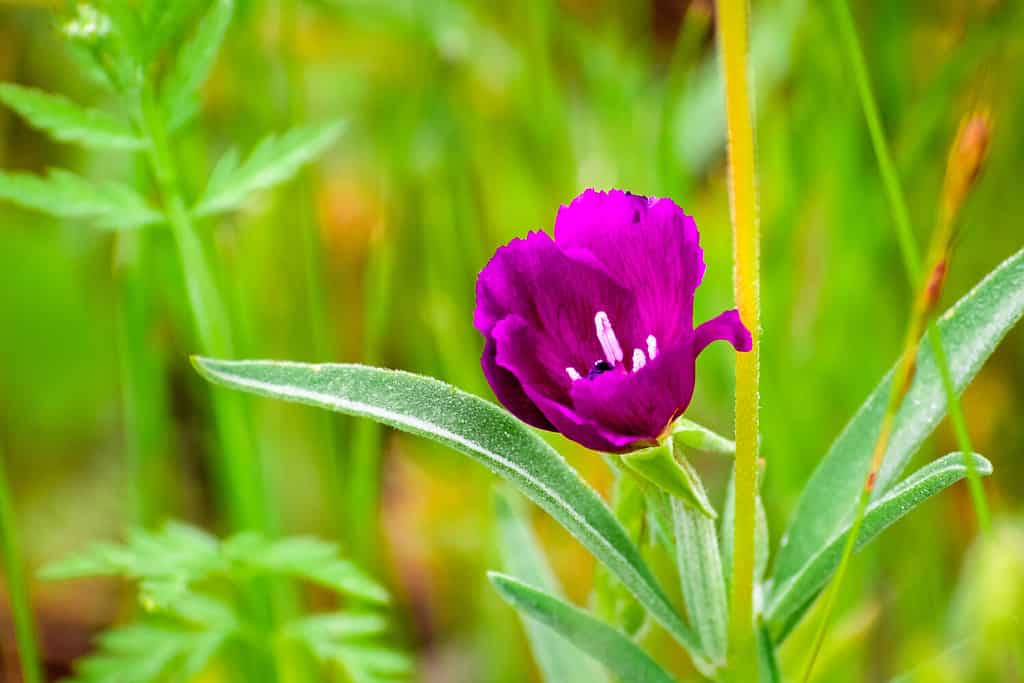
If you’re looking to plant some flowers in Arizona in October, plant the winecup clarkia, which will bloom the following spring.
©Sundry Photography/Shutterstock.com
Shifting our focus from veggies and herbs, let’s explore flowers perfect for an October planting in Arizona.
The winecup clarkia, scientifically known as Clarkia purpurea, is a striking wildflower native to the western regions of North America, including Arizona. These beauties flourish with captivating bowl-shaped blooms from spring through the heart of summer. You can expect petals in hues ranging from delicate pink to deep wine red, often highlighted by a central splash of pink or red.
Interestingly, these blooms embrace the sun by day and tuck in by night. Supported by upright stems tinged in red, these flowers eventually give rise to dry seed capsules. Once ripe, these capsules pop open, dispersing a multitude of seeds.
With a height potential of 24 to 36 inches and a spread of about 12 inches, this flower will appear in spring if planted in October.
For the best results, position the winecup clarkia in a sunny spot and ensure the soil drains well. While it appreciates moisture in its blooming months, this resilient flower can handle dry spells quite well.
8. Tahoka Daisy

Plant Tahoka daisies in October to enjoy their beautiful purple petals in the spring.
©krblokhin/iStock via Getty Images
Machaeranthera tanacetifolia, commonly known as the Tahoka daisy, is another annual wildflower to be planted in October.
This flower forms clusters of stems draped in foliage resembling delicate ferns, segmented into tiny, pointed sections. From late spring to fall, you’ll witness groups of dainty, aster-like blooms spanning 1-2 inches, gracing the stem tips. These showy flowers combine lavender to purple petals around a sunlit golden-yellow center.
These captivating flowers aren’t just a feast for our eyes but also attract butterflies. With a growth pattern that’s erect yet expansive, this self-seeding wildflower adds a vivid splash to home gardens.
This plant can reach heights between 6 and 24 inches. If sown in October, expect a floral display by late spring.
For optimal growth, plant it where it can bask in sunlight but can also handle partial shade. It prefers sandy or gravelly soils that drain well. A bit of regular watering will keep the blooms coming.
9. Desert Lavender
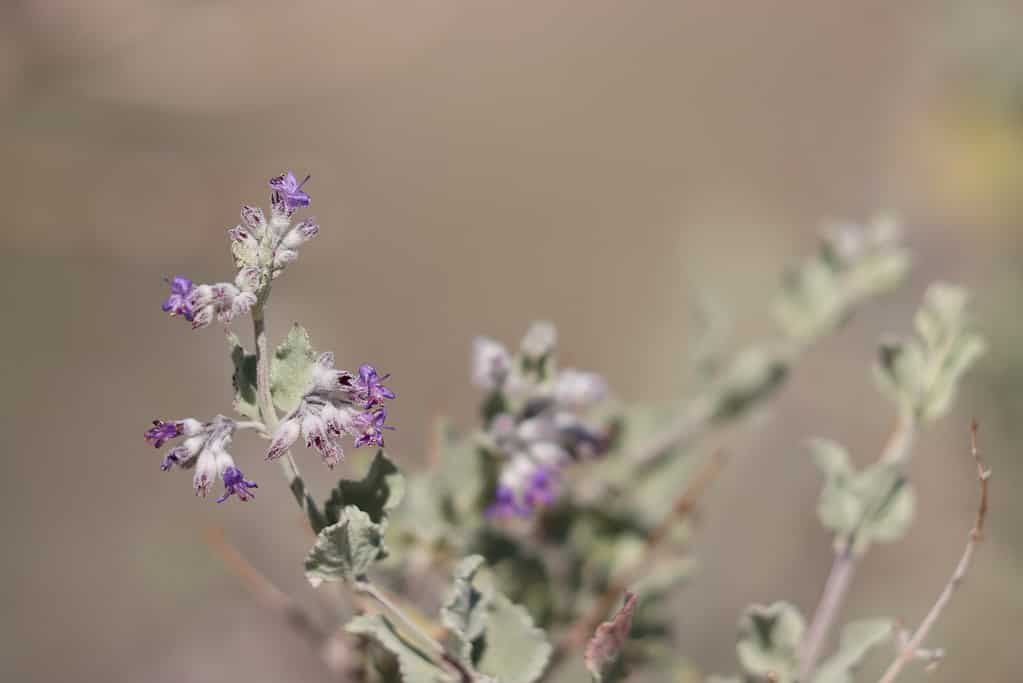
Desert lavender is a fragrant shrub that is perfect for Arizona gardens.
©Jared Quentin/iStock via Getty Images
Perfect for the scorching desert environment, desert lavender or Condea emoryi is a fragrant, multi-branching evergreen. Its leaves are a silvery gray hue, round in shape, and edged with scallops and tiny teeth. From the heart of winter to the dawn of summer, expect to see a bounty of small blue-violet blossoms arranged in short clusters.
One of its standout features is the delightful lavender scent it releases, especially when touched or after a rain shower. It’s not just humans who adore this shrub; bees and butterflies are frequent visitors. Gardeners often favor desert lavender for its low maintenance needs and resilience against heat and dry spells.
This plant can stretch both in height and width to 6 to 10 feet. Planting in October produces the best results.
It flourishes best under the blazing sun, set in dry, sandy, or gravel-filled soils that don’t retain water. While it can endure droughts, occasional watering gives it a fresher appearance.
10. Orange Honeysuckle
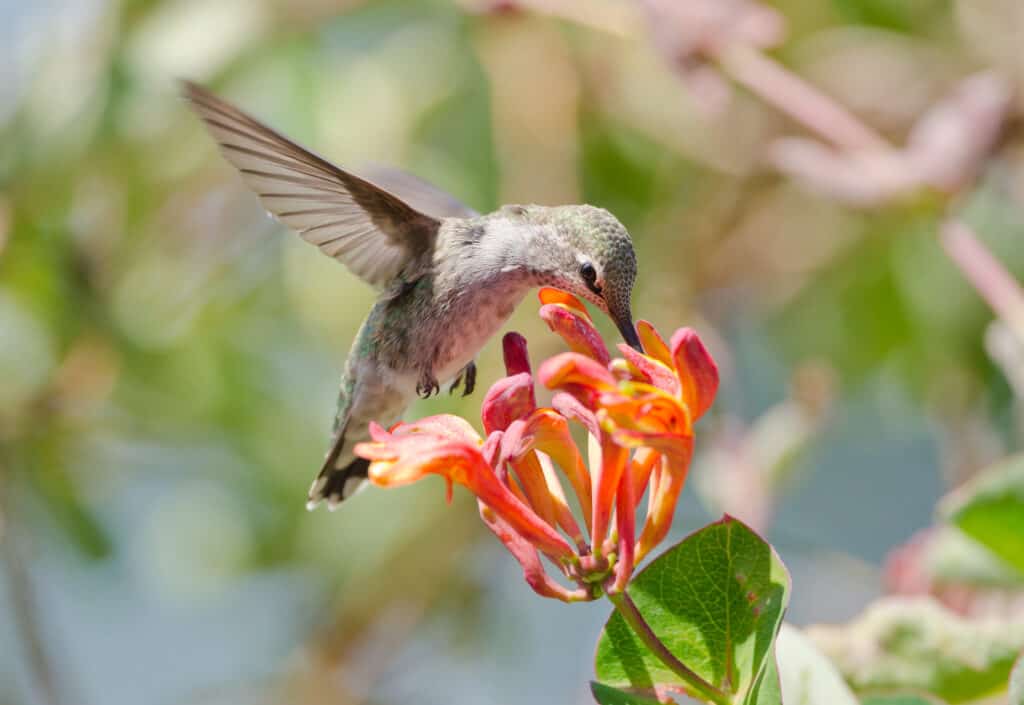
Orange honeysuckle is a gorgeous climber to consider planting in Arizona in October.
©Birdiegal/Shutterstock.com
For those seeking a climber to plant in their Arizona gardens in October, the orange honeysuckle is a top pick.
This sprawling deciduous vine shows orange tube-shaped blooms extending up to 1.5 inches, which elegantly fan out into five distinct lobes. These delightful flowers cluster at the tip of branches, right above broad, round leaves, making their appearance from late spring to mid-summer. As the season progresses, these blossoms make way for orange-red berries.
Not just a feast for the eyes, these berries can be eaten raw or cooked. This plant is a hit among hummingbirds, bees, and butterflies as well. The radiant flowers set against the backdrop of its glossy, dark green leaves present a visual treat. However, when aiming for more structured growth, like on a trellis or arbor, it might need a little guidance.
Expect its growth to stretch between 10 to 20 feet in height and spread about 20 to 30 feet in width.
Though it has a soft spot for areas with partial shade, this climber thrives in nutrient-rich, well-draining soils. It can handle direct sunlight, and it establishes a drought tolerance over time.
11. Scarlet Monkey Flower
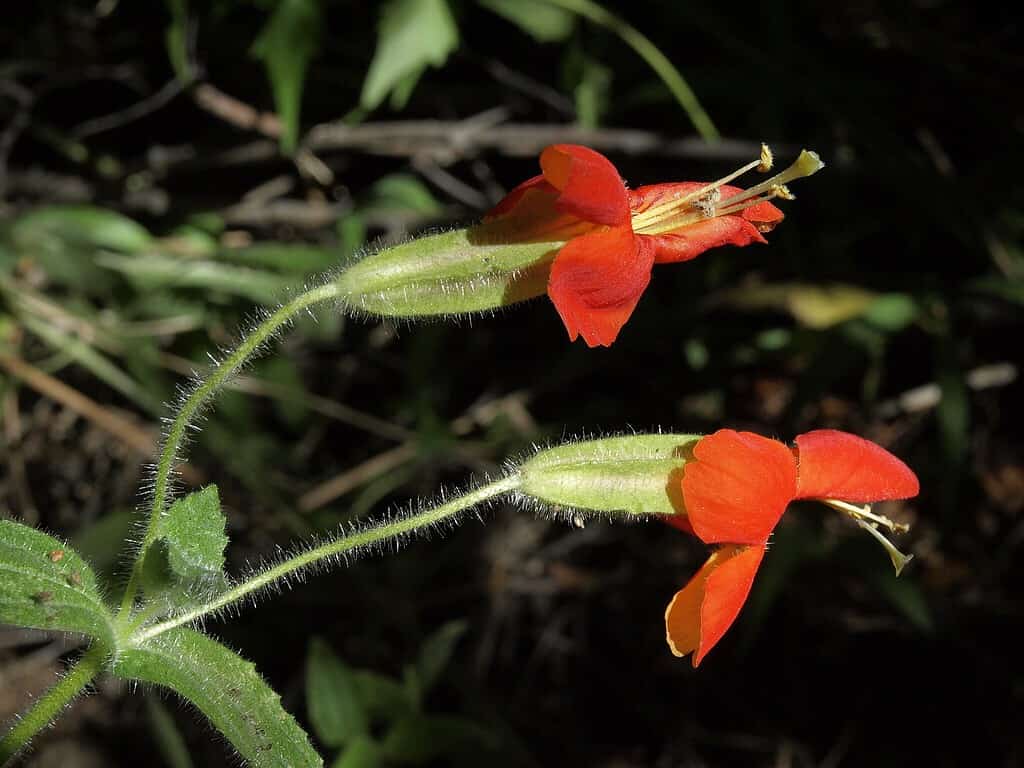
The scarlet monkey flower boasts fuzzy, pale green leaves.
©Jim Morefield from Nevada, USA, CC BY-SA 2.0 , via Wikimedia Commons – Original / License
Originating from the southwest regions of the U.S. and Baja California, the scarlet monkey flower, known scientifically as Mimulus cardinalis, is an evergreen perennial. It showcases slightly fuzzy, pale green leaves, about 4 inches long, that stretch out from upright, slightly sticky stems.
This plant produces dazzling red to orange-red flowers shaped like two-lipped tubes and spanning about 2 inches. These blooms burst between spring and fall, sitting prominently above the foliage and serving as a beacon for hummingbirds.
Expect the scarlet monkey flower to grow to dimensions of about 1 to 3 feet, both in height and width.
It thrives under partial shade, rooting in nutrient-rich, moist soils. While it can brave direct sunlight, ensure the ground remains damp. Interestingly, it’s quite resilient, even handling sporadic waterlogging. If you’re looking to grow this flower, sow its seeds either in the fall, such as in October, or at the onset of spring.
12. Desert Spoon
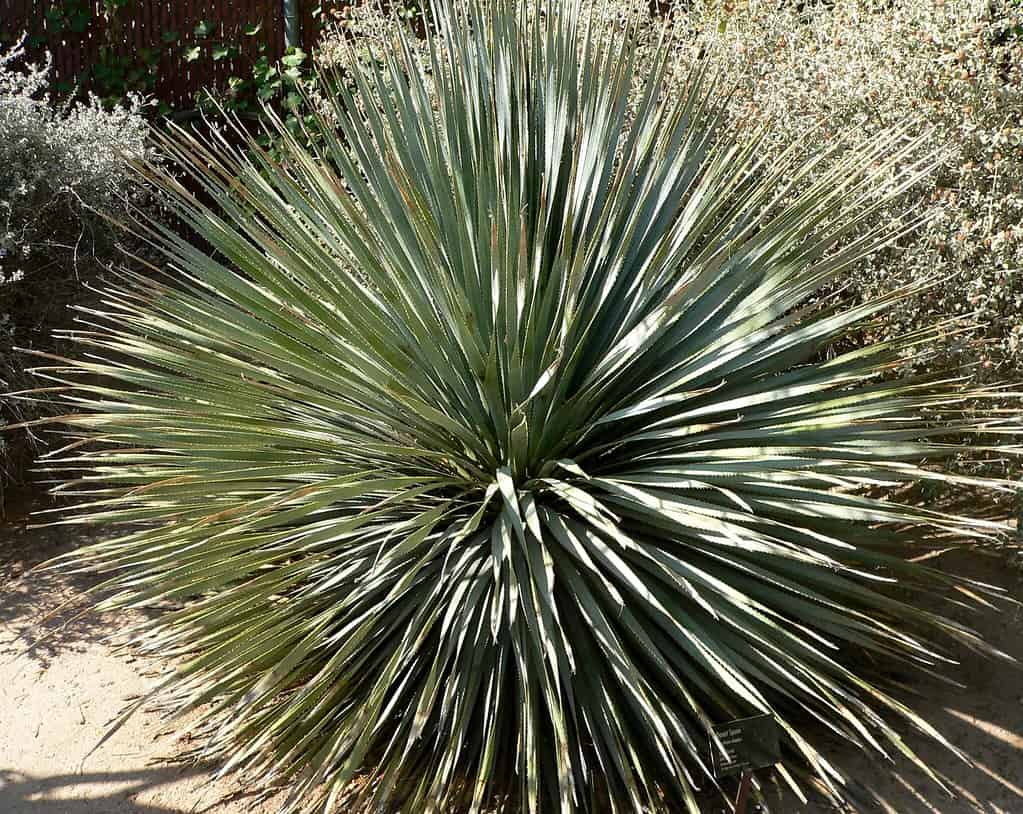
If you’re looking at planting a succulent in October, plant the desert spoon.
©Stan Shebs, CC BY-SA 3.0 , via Wikimedia Commons – Original / License
Succulents are synonymous with Arizona, and rounding off our October planting list is the captivating desert spoon.
The desert spoon, scientifically known as Dasylirion wheeleri, is an aesthetic evergreen succulent. It’s characterized by its intricately arranged rosette filled with countless elongated, shimmering blue-green leaves that end with wispy white threads. These leaves, which can span up to 5 feet, are edged with golden spines, giving them a unique appeal. At the base of these leaves is a sturdy, compact trunk.
During summer, the plant gets crowned with an impressive flower stalk stretching up to 15 feet. This stalk boasts many small flowers, which are favorites among bees and hummingbirds. With its striking appearance, the desert spoon is a prime choice for water-conserving gardens, seamlessly fitting into Mediterranean or dry garden designs.
Slowly, this succulent can grow between 3 and 5 feet in height and spread 4 to 5 feet across.
The desert spoon finds its sweet spot in well-draining soils under the generous Arizona sun. Once settled, it doesn’t need constant watering, but an occasional deep soak during the hotter months can spur faster growth. While it flourishes under direct sunlight, it can adjust to partial shade and even handle some humidity. Plus, its drought-resilient nature is a cherry on top.
Summary of the Best Things to Plant in Arizona in October
| Number | Thing to Plant in October | Plant Type | Expected Harvest / Flowering Time |
|---|---|---|---|
| 1 | Lettuce | Leafy Vegetable | 30 to 70 days |
| 2 | Radish | Vegetable | 3 to 5 weeks |
| 3 | Potato | Vegetable | 90 to 120 days |
| 4 | Parsley | Herb | 90 to 100 days |
| 5 | Oregano | Herb | 6 to 8 weeks |
| 6 | Mint | Herb | 8 weeks |
| 7 | Winecup Clarkia | Annual Wildflower | Mid-spring to mid-summer |
| 8 | Tahoka Daisy | Annual Wildflower | Late spring to fall |
| 9 | Desert Lavender | Evergreen Shrub | Mid-winter to late spring |
| 10 | Orange Honeysuckle | Deciduous Climber | Late spring to mid-summer |
| 11 | Scarlet Monkey Flower | Evergreen Perennial | Spring to fall |
| 12 | Desert Spoon | Evergreen Succulent | Summer |
The photo featured at the top of this post is © krblokhin/iStock via Getty Images
Thank you for reading! Have some feedback for us? Contact the AZ Animals editorial team.







